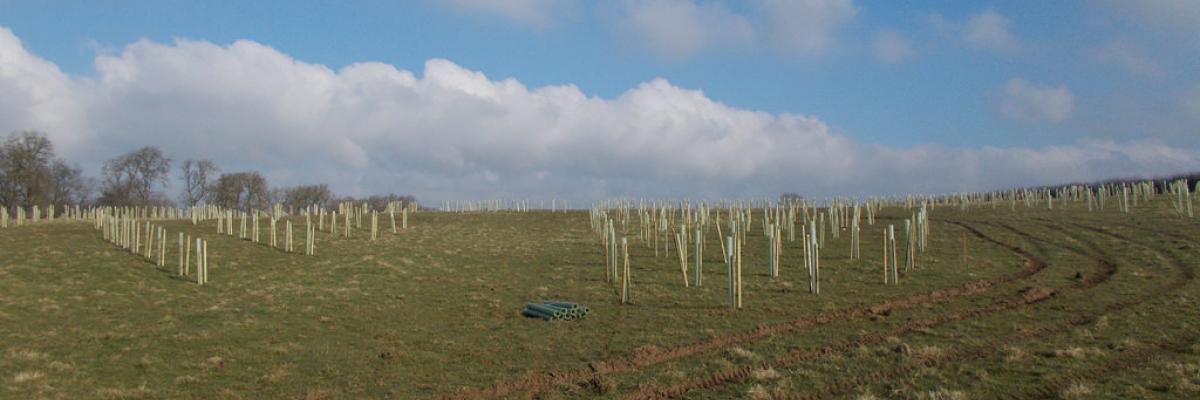

Tree planting and farming hand in hand
How to plant without affecting your subsidies - Case Study
Download the PDF
This case study describes the agroforestry trial that the Woodland Trust is collaborating on with the Allerton Project at the Game & Wildlife Conservation Trust (GWCT) demonstration farm. The trial is looking at how trees and sheep grazing can work effectively together whilst also contributing to GWCT’s game management system, and providing other on-farm and environmental benefits. The case study describes the aims of the trial against a backdrop of tree planting potentially affecting farming subsidies and grants. It describes the technical details of the trial, the nature of the collaboration between the Woodland Trust and the GWCT, and the questions that they are hoping to collectively answer.
- Trees can provide: shelter for livestock, habitats and food for game, wildlife, and pollinators, and wood fuel. They can help combat soil erosion, slow water run-off, and extend the growing season through warming the soil.
- This trial (integrating grazing sheep with different tree densities), is aiming to:
- Demonstrate how combining trees and grazing can potentially make your farm more sustainable.
- Establish the optimum number of trees that can be planted whilst also allowing for grazing of permanent pasture.
- Fuel the push for a new policy approach that allows trees to be integrated into farms without farmers being penalised.
- The project is also hoping to look at the benefits trees can have on flock performance, how well grass grows under and around trees, identify when grazing around trees affects flock productivity, and identify the most beneficial tree densities and ways in which trees improve environmental resource protection.
- Trees incorporated within the trial include:
- Wild privet and crab apple (providing cover and food for pheasants);
- walnut (with climate change in mind, as it thrives in warmer climates);
- and oak, hornbeam, small-leaved lime and aspen (high canopy trees that can be used to replace any ash lost).
Also see:
- Stuart's blog from February 2017 'Agroforestry - it's just trees on farms!'
- The Woodland Trust video 'The Allerton Project - how to plant trees without affecting your subsidies', in which Roger Draycott from the GWCT talks about what they hope to achieve with the research, including what they are aiming to measure in the future i.e. how trees influence the grazing efficiency of the sheep, effects on soil structure and chemistry, and how tree canopy closure affects the grass sward underneath…
Video footage below was taken on a visit to the trial site in November 2016.
(Photo credit: Stuart Holm)
